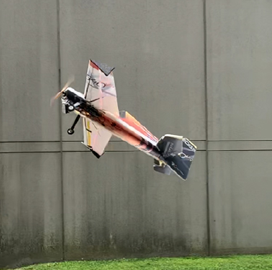Johns Hopkins Applied Physics Laboratory researchers developed an algorithm that enabled fixed-wing unmanned aerial vehicles to avoid potential collisions in complex environments.
The study also resulted in a new maneuvering capability that allowed the UAVs to launch in near-vertical takeoffs, eliminating the need for long runways or manual lift-off, the laboratory said Thursday.
To achieve the predictive control algorithm, researchers equipped the fixed-wing vehicles with an onboard depth camera and NanoMap, a mapping system developed by the Massachusetts Institute of Technology. The camera’s stereo feature gave the UAV depth of perception and enabled triangulated collection of data, even in extremely constrained spaces and at a speed of 20 miles per hour.
Aside from evading threats and other objects of interest, the technology also shows promise for intelligence gathering, the scientists said.
During the study, they also demonstrated near-vertical takeoff of the UAV by installing dynamically actuated gimballed propellers, which allowed the aircraft to hover before shifting to forward flight.
The novel capabilities may be applied by Northrop Grumman and Raytheon Technologies to their swarm architecture under the terms of the Defense Advanced Research Projects Agency OFFensive Swarm-Enabled Tactics program.





